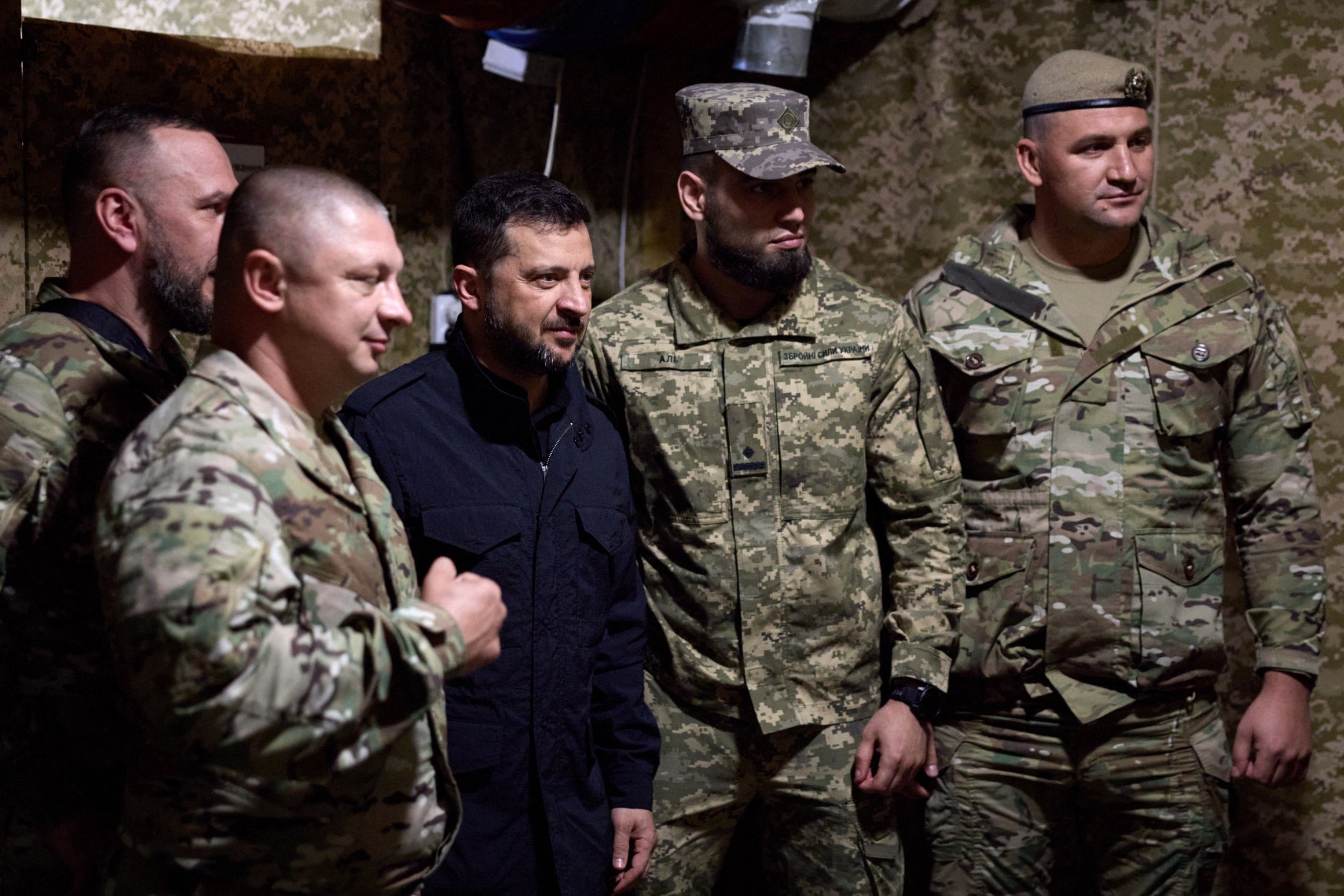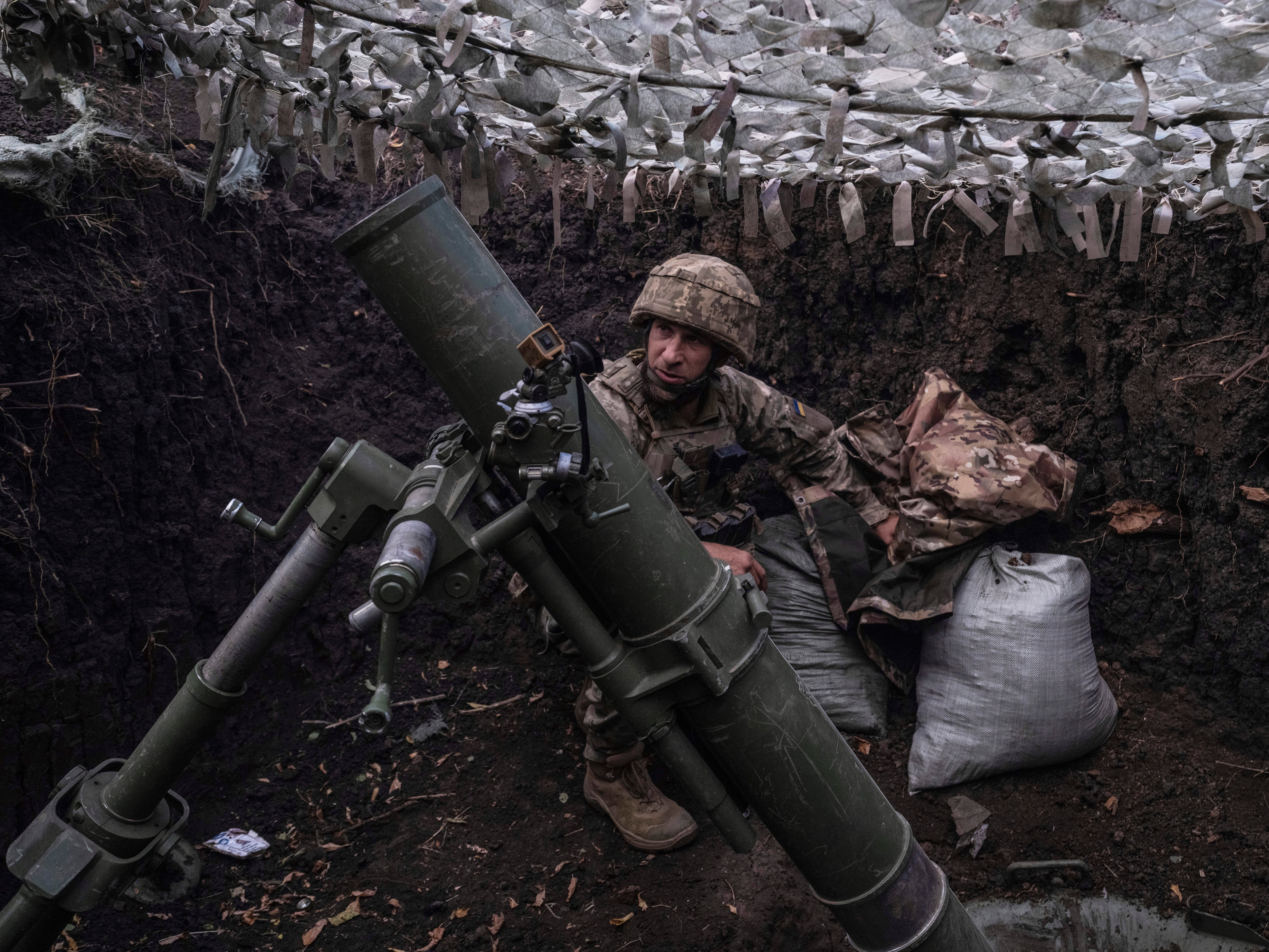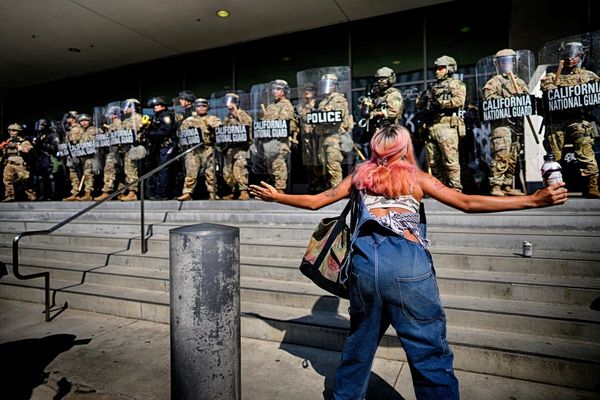Donald Trump has made a unique and sudden intellectual contribution to the future of Ukraine and European defence, shifting the debate away from an assumption that Kyiv must negotiate or die, to a belief that it could destroy the Kremlin’s army.
This remarkable volte-face is being seized upon in Europe with as much vigour as was evident in the effort to look away when Trump backed Vladimir Putin over Ukraine, or when he threatened to invade Denmark and Canada.
Trump says all kinds of stuff. Much of it, like his attacks on the UK after he was feted by its king, are politely ignored by a government keen to keep him onside – or at least not drive him further towards the dark side.
But after meeting with Volodymyr Zelensky on Tuesday, on the sidelines of the UN General Assembly in New York, he posted on his social media: “... after seeing the Economic trouble [the war] is causing Russia, I think Ukraine, with the support of the European Union, is in a position to fight and WIN all of Ukraine back in its original form.
“... Putin and Russia are in BIG Economic trouble, and this is the time for Ukraine to act.”

He made no commitment to help Ukraine do that. But his statement shifted the entire debate among Ukraine’s allies, away from despondency towards the notion of outright victory.
No other Western leader has spelt out more starkly the desire to see Russia defeated in Ukraine.
For the past six months, the focus has been on how to get Ukraine to agree a ceasefire that allows for the loss of about a fifth of its territory in return for peace underwritten by (pretty feeble) Western military assurances.
Europe moved fast to cement Trump’s off-the-cuff response into a wider policy.
“We can achieve much more; not all European states have done what they promised Ukraine for a long time. We need to look at what other financial and military options we have,” German foreign minister Johann Wadephul told radio station Deutschlandfunk.
Russia was rattled. The Kremlin issued a statement hitting back at Trump’s suggestion that Ukraine could win.
“As far as we understand, President Trump’s statements were made after communicating with Zelensky and, apparently, under the influence of a vision set out by Zelensky,” said Kremlin spokesperson Dmitry Peskov. “This vision contrasts sharply with our understanding of the current state of affairs.
“The fact that Ukraine is being encouraged in every possible way to continue hostilities and the argument that Ukraine can win something back is, in our view, a mistaken argument. The dynamics on the front lines speak for themselves.”

Ukraine is not winning. Neither is Russia. The war is at a bloody stalemate. Trench warfare has given way to drone conflict, while tiny groups of infantry scrabble in ruined landscapes for survival and are hunted by unmanned aircraft the size of birds.
This, said Zelensky bleakly, is “the most destructive arms race in human history”, because soon, once drone technology is combined with artificial intelligence, “dead zones” of the kind found on the Ukrainian front line will spread around the world.
“Ten years ago, war looked different, and no one imagined that cheap drones could create dead zones, areas stretching for dozens of kilometres where nothing moves, no vehicles, no life. People used to imagine that only after a nuclear strike. Now it’s drone reality.”
He called for international controls on AI and drones, but in the meantime he has a war to fight – one that the US president now says Kyiv can actually win.
Ukraine showed in its 2022 summer and autumn offensives that, using fast-moving manoeuvre tactics, it can scramble Russia’s command structures and implode its lines. Since then it has expanded its operations into Russia itself, targeting the Kremlin’s fuel systems especially.
Russia’s refining capacity has been cut by around 17 per cent, and more than a dozen significant fuel processing plants have been hit, causing the loss of around 1.1 million barrels of production a day.
Meanwhile, Russia’s piecemeal advances on the eastern front have been achieved at a staggering human cost. British intelligence estimates that Putin has lost 236,000, killed or injured, this year – and more than a million since 2022. In June, the UK said that Russia had lost 32,000 from the battlefields alone.
These are informed guesses. But on the ground, Ukrainian soldiers have often spoken of the mass casualties inflicted on advancing Russians, and the enormous loss of life they endure to capture tiny pieces of land.

Ukraine, meanwhile, now leads the world in drone production, making its own highly effective long-range cruise missiles. It has won the battle for the Black Sea, forcing Russian ships to hide in their harbours.
Kyiv’s losses have also been high. Draft-dodging is an increasing problem. On the front lines, many soldiers have talked of the inevitability of a peace deal with Russia in which the Kremlin retains control over much of the east of the country.
Trump’s recent statement will be a morale booster for Ukrainians. Kyiv and its European allies, including the UK, will try to turn Trump’s new view of the conflict into concrete military aid on the scale at which it was provided by the US until shortly after the current president stopped it shortly after taking over from Joe Biden.
Europe is Ukraine’s main military supporter. Nato members buy weapons from America for Kyiv, but that could, conceivably, change. If the US returned to its former position, supplying military aid directly, especially long-range missiles and armour capable of withstanding drone attacks, Ukraine could return to the offensive.
Russia’s military is demoralised. It has improved its command structure and is keeping pace with many of the advances in drone technology that the war has driven. But its trench lines are manned by starving troops with little training, led by officers at the rear who will shoot their own men if they fall back.
It would be relatively easy to break the spine of the Russian military in Ukraine, and rout its forces – just as Ukraine did in late 2022.
He may not have meant to, but Trump has set Ukraine on the path to victory just by suggesting that it’s possible.







